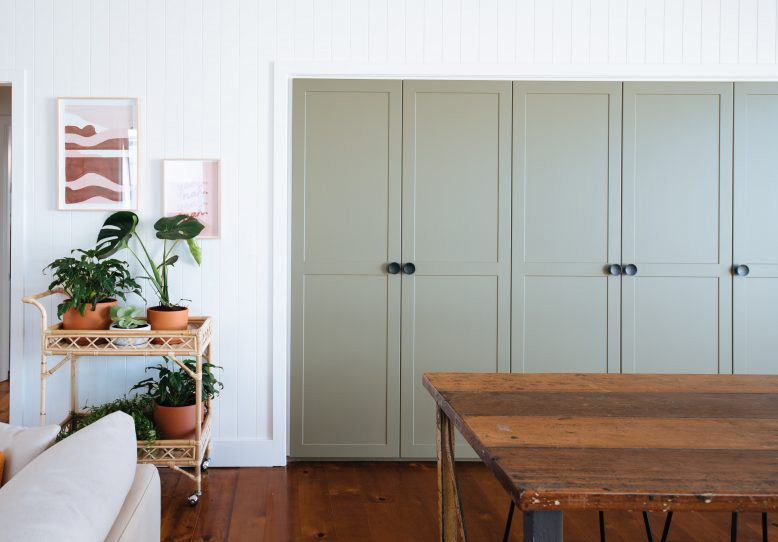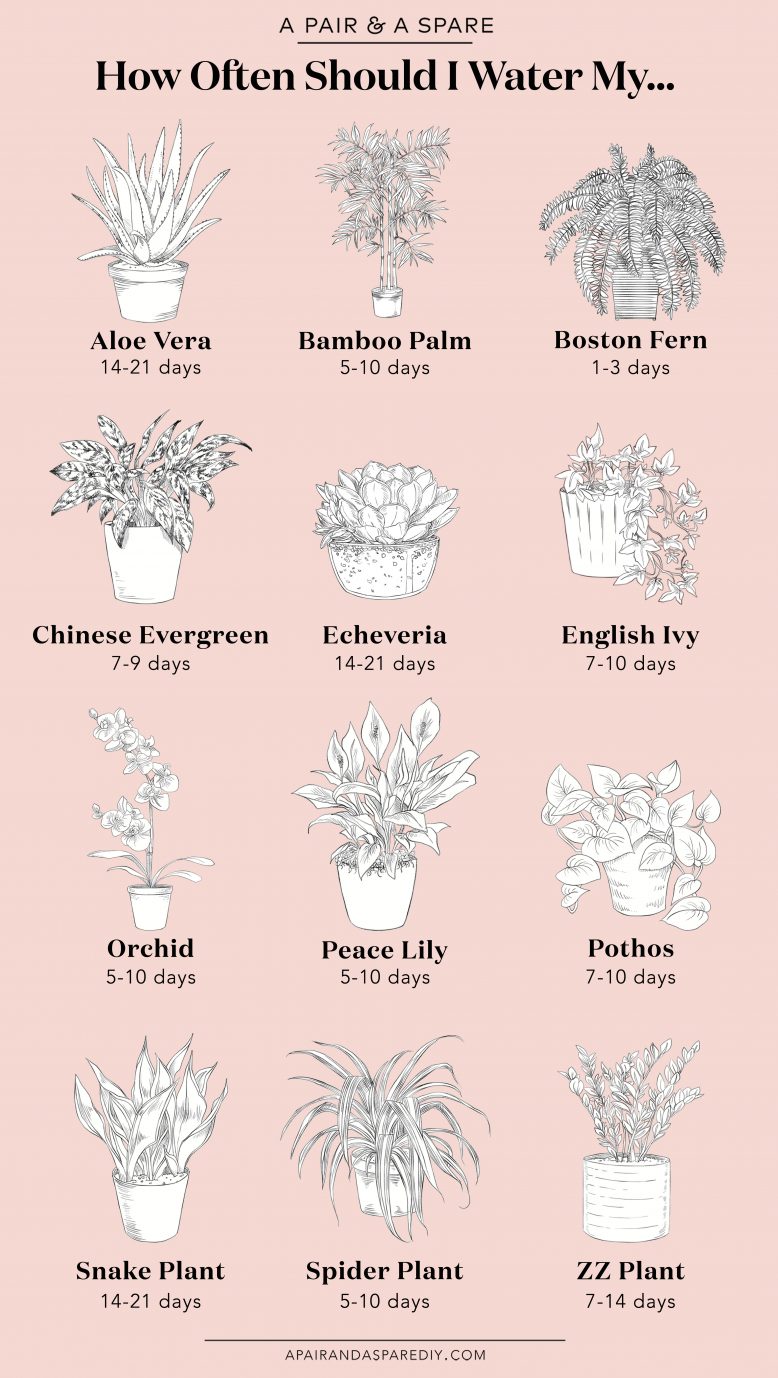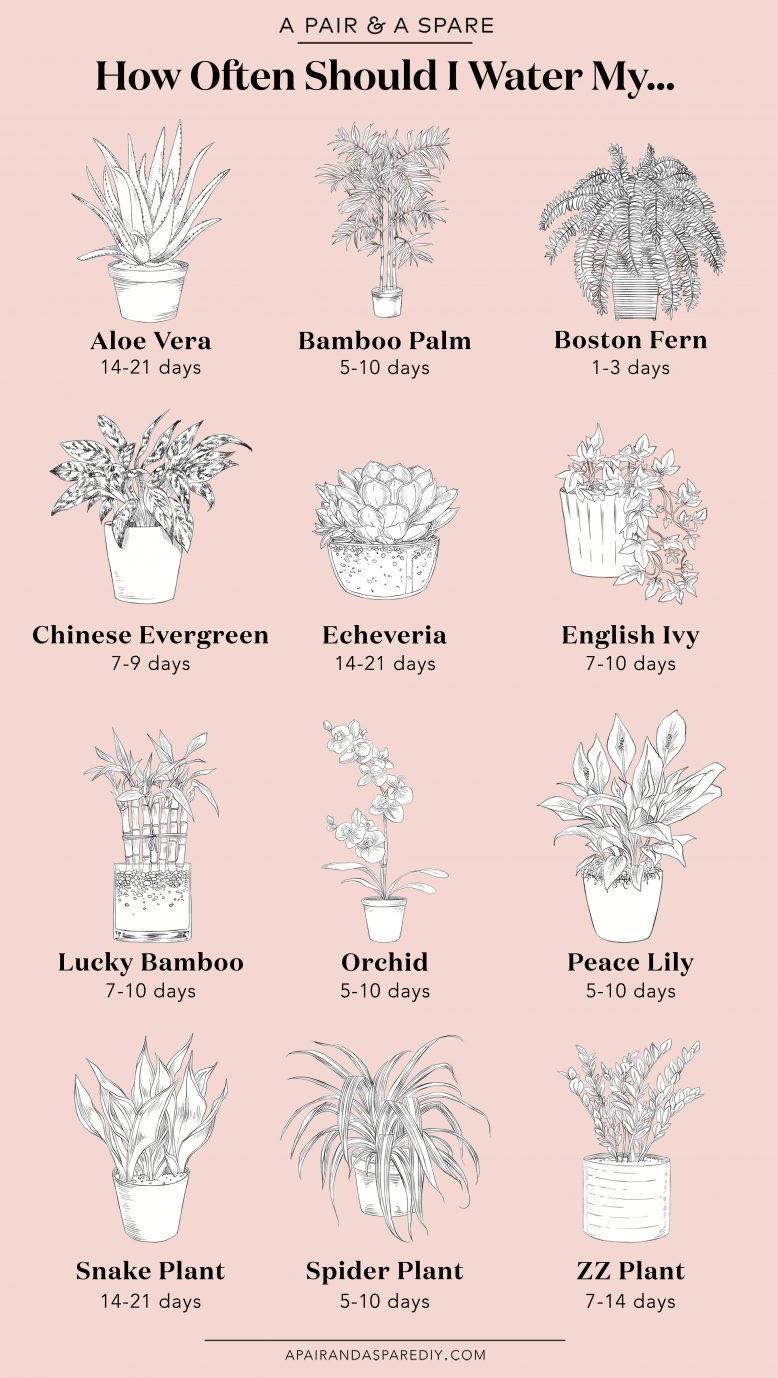We’re back! With another post in our quest to demystify caring for your indoor plants.
Inevitably when we post about plants we get lots of comments, the crux of which are usually ‘how often should I water my…?’. So instead of beating around the bush (pun intended!) we thought it high time we got down to it, and share with you an illustrated guide on how much you should water the most common house plants.
Question: How often should I water my plants?
In the past I had a schedule for watering my plants, but over time I’ve learnt that depending on the plant, the season, their growing season and plenty of other factors, plants often require different amounts of water. So instead of sticking to a hard and fast routine, it’s useful to develop your knowledge of the species and their needs, and also get good at testing the soil.
How to tell if your plant needs watering
The best way to tell if your plant needs watering is to use your fingers. Stick your finger into the dirt a few inches deep and see how dry the soil is. If the soil is lighter coloured and doesn’t stick to your finger, you can tell it’s dry. Because different plants like different dryness conditions, the below illustration and specific plant information will give you a run down on the most common plants and their needs.
A Guide To Watering Common Houseplants
ALOE VERA
Water aloe vera plants deeply, but infrequently. To discourage rot, allow the soil to dry between waterings and never let it sit in water. Water about every 21 days and even more sparingly during the winter. To test dryness before watering, simply insert your finger into the soil up to the second knuckle. If it is dry, water the plant. If it is still moist, wait a few days.
BAMBOO PALM
Keep the bamboo palm moist, but never overwater. Soggy soil leads to root rot, so check often to be sure that the plant is draining properly. Pour water from the drainage tray after watering and don’t leave it sitting in water. Only water when the soil feels dry and allow the soil to dry out in between watering in the winter.
BOSTON FERN
Water the fern when the soil becomes dry. Do not allow the soil to dry out. This may mean watering twice a week or daily in hot weather. The frequency will change depending on the temperature and moisture in your home. Add enough water so that it flows out the drainage holes on the bottom of the container.
CHINESE EVERGREEN
To determine if your Chinese evergreen plant needs water just insert your fingertip into the soil. Moist soil will cling to your skin and is usually darker than dry soil. Water this plant when dry which tends to be every 7-9 days in the warmer months & every 2-3 weeks when winter comes around.
ECHEVERIA
Echeverias like full sun, bright shade, and well-drained soil. Water them when the soil is dry; they often can go anywhere from 14 days without water once established. When you water echeveria, water the soil and not the rosette. Pour on the water until it drains out the bottom.
ENGLISH IVY
English ivy needs regular watering until the plant is established, which usually takes one growing season. Keep the foliage as dry as possible when watering. After it’s established, provide water only during extended periods of dry weather. Don’t over-water, as English ivy is prone to fungal diseases in soggy, waterlogged soil.
ORCHID
Always water early in the day so that your orchids dry out by nighttime. In general, water once a week during the winter and twice a week when the weather turns warm.
PEACE LILY
Peace lilies love high humidity. Misting their leaves or placing their pot on top of a moistened tray of gravel can help to increase humidity. They are sensitive to chemicals commonly found in tap water though, such as fluoride, which may cause brown leaf tips, so use filtered, room-temperature water, if possible. Keep the soil moist, but do not overwater.
POTHOS
Pothos do best when their soil is allowed to dry out between waterings. Keep the soil moist, but be careful not to overwater. If the leaves are yellow, you may be watering it too much. Excessive watering may cause root rot. If the leaves are wilting or turning brown, you should water the plant more often. Remove all yellow and brown foliage, and turn your plant to promote even, full growth.
SNAKE PLANT
Water your snake plants approximately every 14 days, depending on your home’s temperature, light levels, and humidity. Always make sure the soil is almost completely dry before thoroughly watering again. Be careful not to overdo it because your plant will rot out.
SPIDER PLANT
Spider plants in particular are sensitive to the fluoride in tap water, so it’s important to use distilled or purified water. Water moderately or once per week during the first year, which should be sufficient to keep the soil consistently moist, but not overly wet. After the first year, you can water the plant sporadically. Empty excess water from drainage trays immediately if your spider plant is potted.
ZZ PLANT
This plant prefers to be kept on the dry side. In most cases, a thorough watering every 7 to 14 days is usually fine. Problems can develop if the plant is watered too frequently and the soil is constantly wet.
I hope this post has given your some insight into when you need to water your plants. Getting the watering right is really a combination of two factors – getting to know the plant species and their wet/dryness preferences, and practicing checking your plant’s soil. When in doubt – pick some plants that require the least water and are harder to kill.















